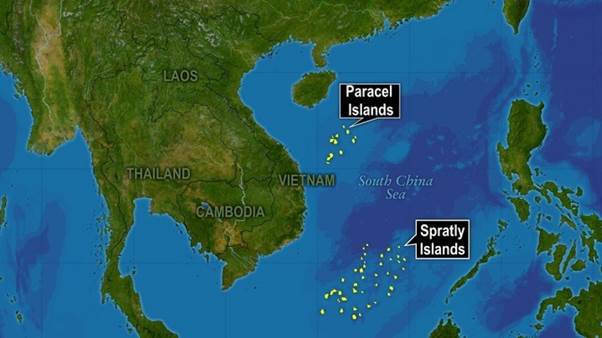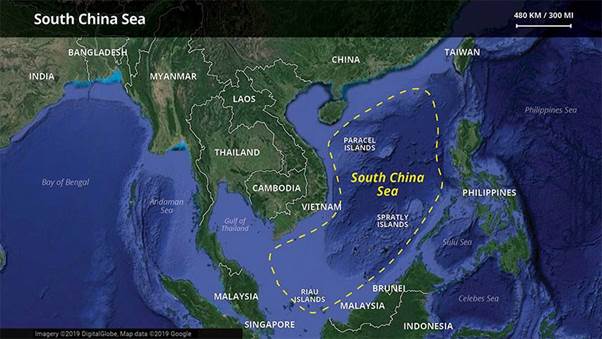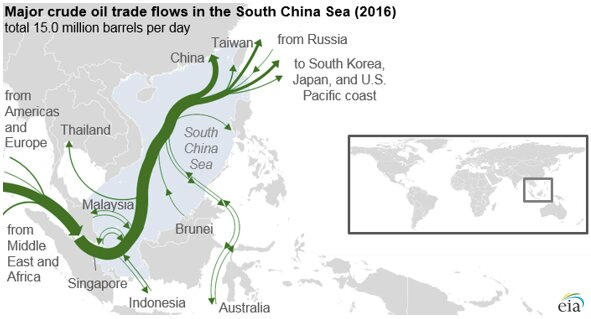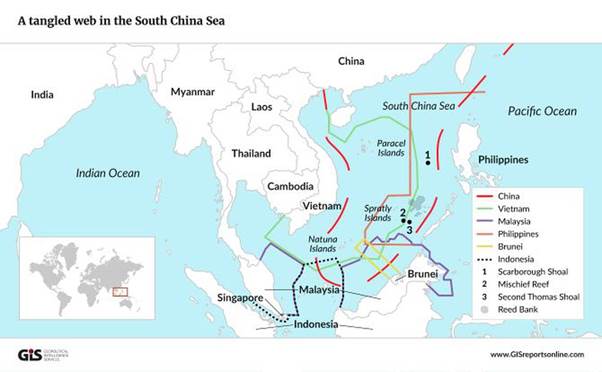Why in news?
China on Tuesday (Apr 21) defended its naming of 80 islands and other geographical features in the South China Sea in a move likely to anger neighbours as the country asserts its territorial claims.
Details

- A joint announcement of the names on Sunday from the Ministry of Natural Resources and the Ministry of Civil Affairs came a day after China established new administrative districts for the contested Spratly and Paracel island chains.
- The notice listed the Chinese names and coordinates of 80 islands, reefs, seamounts, shoals and ridges, 55 of them submerged in water.
- China last released such a list in 1983 when it named 287 geographical features across the disputed waterway.
- Beijing has repeatedly asserted its sovereignty in the sea despite rival claims by Vietnam, Taiwan, Malaysia and other nations.
Criticism of China’s move and views of other countries
- No state can claim sovereignty over underwater features unless they are within 12 nautical miles of land. So, it can be claimed that China is ignorant of this or deliberately trying to overturn international law.
- China has ratified the UN Convention on the Law of the Sea (UNCLOS) which is very clear on what states can and cannot claim as territory. Yet China seems to be going against UNCLOS by asserting sovereignty in very faraway places.
- In recent years, Beijing has stepped up its territorial claims in the South China Sea by building artificial islands and a heavy military presence, making it a flashpoint for geopolitical tensions.
- Vietnam claimed the move “seriously violated” its territorial sovereignty in the area.
- The United States warned China not to take advantage of the coronavirus pandemic to assert itself in the South China Sea.
Where is South China Sea?

- The South China Sea is a marginal sea that is part of the Pacific Ocean that extends from the Strait of Malacca in the southwest, to the Strait of Taiwan in the northeast.
- The littoral countries of the South China Sea are China, Taiwan, Philippines, Malaysia, Brunei, Indonesia, Singapore, Cambodia, Thailand, and Vietnam.
Significance of South China Sea as a Geopolitical Water Body

- It is the connecting link between the Indian Ocean and the Pacific Ocean. (Strait of Malacca)
- The South China Sea is a busy international waterway, one of the main arteries of global trade worth more than $5 trillion and is growing year on year. According to the United Nations Conference on Trade and Development (UNCTAD) one-third of the global shipping passes through it.
- South China Sea has one-third of the entire world’s marine biodiversity and has significant fisheries as a huge contributor to food security in the region.
- Oil and gas reserves beneath the South China Sea are also believed to exist
- It is a rich source of hydrocarbons and natural resources.
- It contains numerous shoals, reefs, atolls and islands. The Paracel Islands, the Spratly Islands and the Scarborough Shoal are the most important.
Dispute in the South China Sea

- The South China Sea is an area of growing conflicts due to territorial claims by different countries.
- With respect to the Spratly Islands, different geographic features are reportedly occupied by claimants such as Taiwan, Vietnam, the Philippines, China, and Malaysia.
- The Paracels Islands are claimed by China, Vietnam, and Taiwan.



